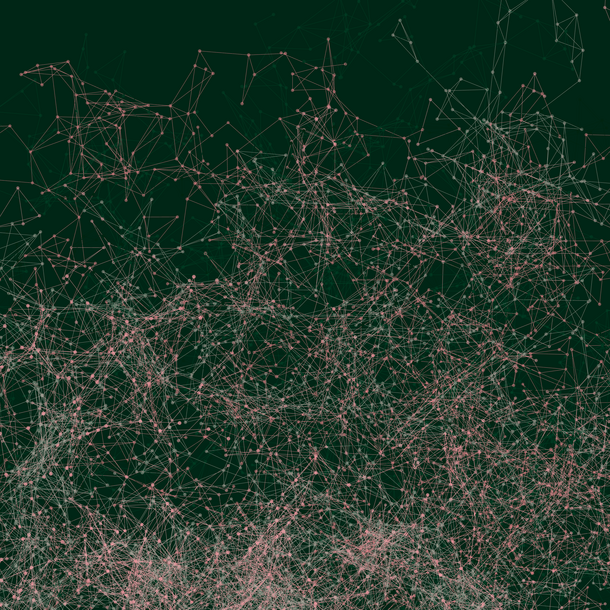Doctoral Researcher:
Kshema Shaju, Alfred Wegener Institute - Helmholtz Centre for Polar and Marine Research, Postdam and Bergische Universität Wuppertal, Wuppertal. kshema.shaju@awi.de
Supervisors:
- Prof. Dr. Thomas Laepple, Alfred Wegener Institute - Helmholtz Centre for Polar and Marine Research,Potsdam, Professor at MARUM & Fachbereich Geowissenschaften (Uni Bremen), Leader ERC project SPACE Thomas.Laepple@awi.de
- Prof. Dr. Peter Zaspel, Fakultät für Mathematik und Naturwissenschaften, Wissenschaftliches Rechnen und Hochleistungsrechnen, Bergische Universität Wuppertal zaspel@uni-wuppertal.de
Location: Wuppertal
Disciplines: Computer Science, Statistics, Data science, Machine Learning
Keywords: Bayesian modeling, inverse problem, uncertainty quantification, borehole thermometry, ice cores, paleo-climate reconstruction.
Motivation:
To understand future climate change, it is critical to fully understand the past and present climate system. Borehole is an important paleo-climate archive where such information are encrypted. Borehole temperatures and isotope data deliver complementary information. Existing methods for reconstruction of past climate from boreholes ignores such crucial information from other sources. Here, we seek to enhance the borehole inversion methods as well as to best integrate the diverse data sources for better reconstruction. This reconstruction technique could provide better quantitative access and insight into the past climate evolution.
Aims:
My PhD project aims to reconstruct past surface temperature evolution from borehole temperature measurements. Initially, a forward heat transfer model is implemented that predicts borehole temperature profiles for a given time dependent surface temperature. This model is inverted to reconstruct the surface temperature of the past from borehole temperature measurements. Existing inversion methods for boreholes are highly model-dependent. This project aims to improve the borehole inversion methods as well as the climate field reconstruction technique by optimally combining various information sources, like water isotope data from ice cores with the spatial covariance structure from simplified climate models or reanalysis data.
Objectives:
(1) Set up a forward model for glacier borehole temperature profiles by a runtime efficient implementation of the advection-diffusion equation.
(2) Develop and test inversion methods for surface temperature using Bayesian inference.
(3) Setup a Bayesian hierarchical model combining the information from water-isotopes and borehole temperatures to reconstruct the local temperature evolution.
(4) Optimize the sampling strategy and show the feasibility and limitations of combined isotope and borehole thermometry to reconstruct the temperature evolution of Antarctica.
References:
- Casado, Mathieu, Thomas Münch, and Thomas Laepple. 2020. ‘Climatic Information Archived in Ice Cores: Impact of Intermittency and Diffusion on the Recorded Isotopic Signal in Antarctica’. Climate of the Past 16 (4): 1581–98. https://doi.org/10.5194/cp-16-1581-2020.
- Cuffey, Kurt M., Richard B. Alley, Pieter M. Grootes, John M. Bolzan, and Sridhar Anandakrishnan. 1994. ‘Calibration of the δ 18 O Isotopic Paleothermometer for Central Greenland, Using Borehole Temperatures’. Journal of Glaciology 40 (135): 341–49. https://doi.org/10.3189/S0022143000007425.
- Münch, Thomas, and Thomas Laepple. 2018. ‘What Climate Signal Is Contained in Decadal- to Centennial-Scale Isotope Variations from Antarctic Ice Cores?’ Climate of the Past 14 (12): 2053–70. https://doi.org/10.5194/cp-14-2053-2018.
- Muto, Atsuhiro, Ted A. Scambos, Konrad Steffen, Andrew G. Slater, and Gary D. Clow. 2011. ‘Recent Surface Temperature Trends in the Interior of East Antarctica from Borehole Firn Temperature Measurements and Geophysical Inverse Methods: TEMPERATURE TRENDS IN EAST ANTARCTICA’. Geophysical Research Letters 38 (15). https://doi.org/10.1029/2011GL048086.
- Ruggeri, Fabrizio, Zaid Sawlan, Marco Scavino, and Raul Tempone. 2017. ‘A Hierarchical Bayesian Setting for an Inverse Problem in Linear Parabolic PDEs with Noisy Boundary Conditions’. Bayesian Analysis 12 (2). https://doi.org/10.1214/16-BA1007.
- Salamatin, Andrey N. 2000. ‘Paleoclimatic Reconstructions Based on Borehole Temperature Measurements in Ice Sheets : Possibilities and Limitations’. Physics of Ice Core Records, 243–82.
- Stuart, A. M. 2010. ‘Inverse Problems: A Bayesian Perspective’. Acta Numerica 19 (May): 451–559. https://doi.org/10.1017/S0962492910000061.
- Tingley, Martin P., and Peter Huybers. 2010. ‘A Bayesian Algorithm for Reconstructing Climate Anomalies in Space and Time. Part I: Development and Applications to Paleoclimate Reconstruction Problems’. Journal of Climate 23 (10): 2759–81. https://doi.org/10.1175/2009JCLI3015.1.
- Zaspel, Peter. 2018. ‘Ensemble Kalman Filters for Reliability Estimation in Perfusion Inference’. https://doi.org/10.48550/ARXIV.1810.09290.








